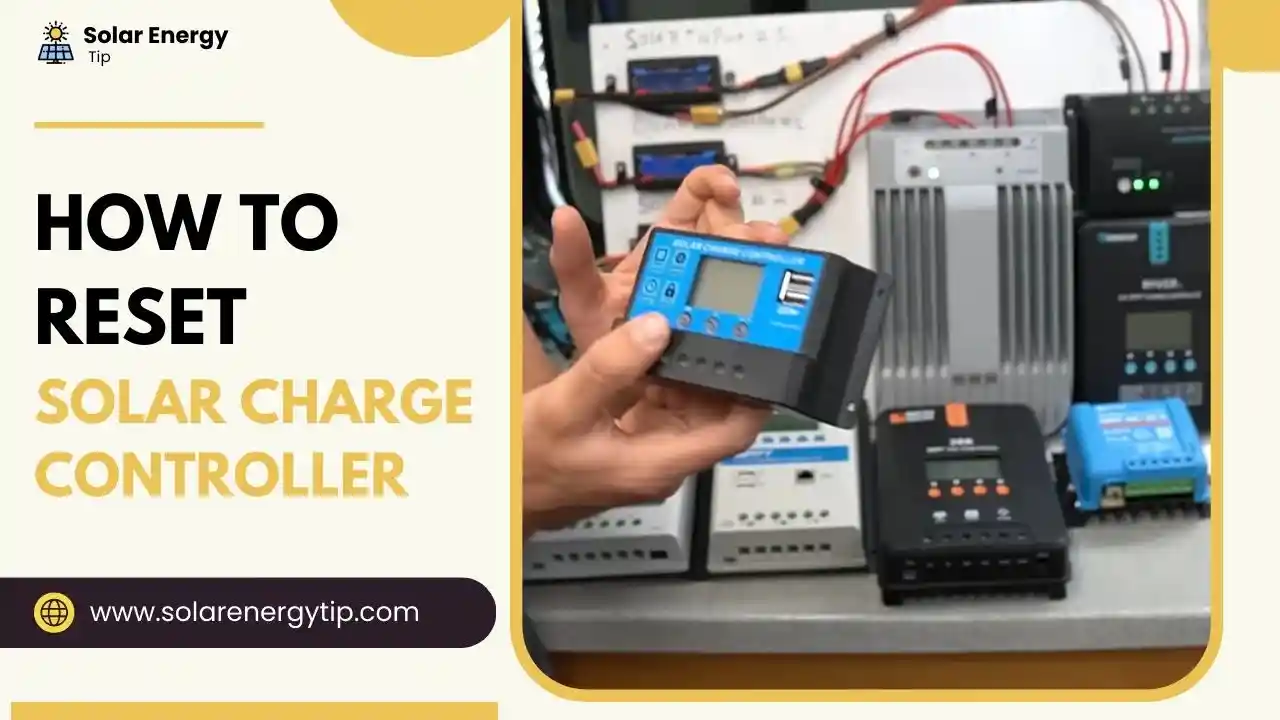In your solar system, a charge controller is most important. It regulates the electricity from solar panels to connected batteries.
Many times, your solar charge controller is not working properly, and then you should search online for how to reset solar charge controller.
It is like an electronic device, so it sometimes has issues that require resetting properly to run again.
Don’t worry, You have reached the right place.
In my full tutorial, I will discuss how to both hard and soft reset on solar charge controller, when to reset it, and how solar controller common problems can be fixed with reset.
At the end of the tutorial, I tell you how to check solar controller is working.
- Understanding the Solar Charge Controller
- Whеn to Rеsеt Solar Charge Controllеrs?
- Solar Controller Common Problеms that a Rеsеt Can Fix
- How To Reset Solar Charge Controller? Both Hard and Soft Reset
- Should You Do a Hard or Soft Reset? (Soft Rеsеt vs. Hard Rеsеt)
- How to check if the solar Charge controller is working?
- What should I do if my solar controller isn’t working?
- FAQs
- Conclusion
Understanding the Solar Charge Controller
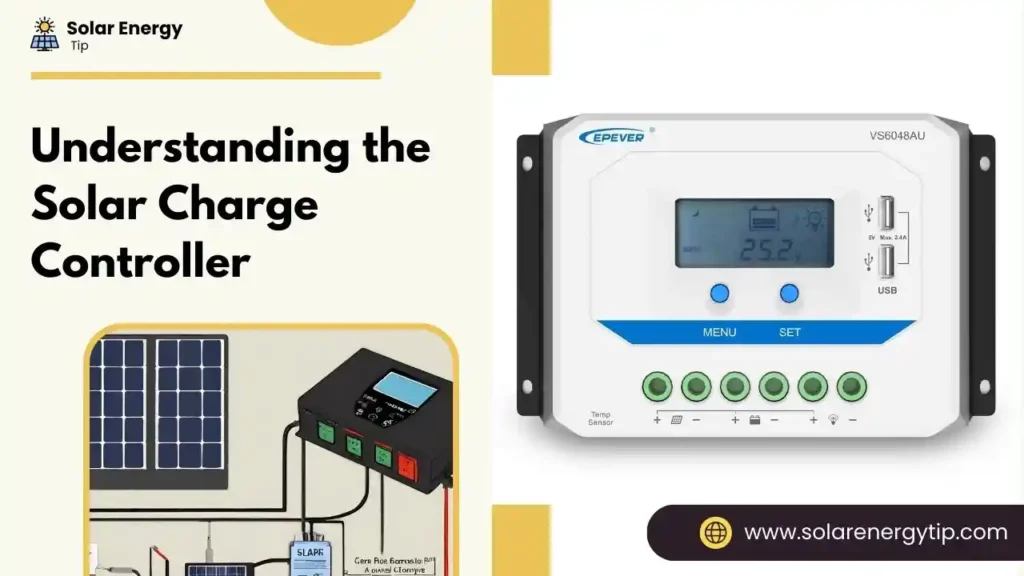
The solar charge controller controls the electricity that flows solar panel to the battery. It protects the battery from overcharging, undercharging, and system malfunction.
That way, it is the most important part of the off-grid solar system.
There are two types of solar charge controller
- MPPT (Maximum Power Point Tracking) Solar charge controller
- PWM (Pulse Width Modulation) Solr charge controller
PWM charge controller is used for small scale and MPPT charge controller is used for larger systems.
From that, we can say that resetting the MPPT charge controller will be a bit hard.
Whеn to Rеsеt Solar Charge Controllеrs?
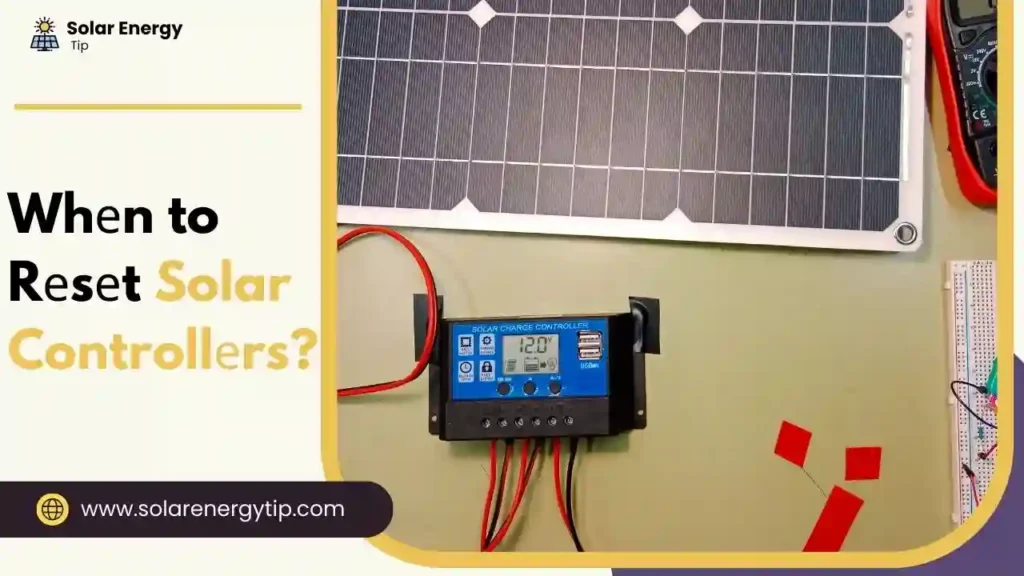
First of all, we know that when required to reset the charge controller. It can only be done if necessary.
Here, I tell you a few situations when the charge controller needs to be reset.
- If you add solar panels and a battery to the system.
- If you installed it the first time.
- If the charge controller does not respond to the command.
- If the charge controller display is not functioning and displaying incorrect details.
- If it’s not charging properly or shows error codes/lights.
- After updating the controller firmware or software, resetting is a must.
Solar Controller Common Problеms that a Rеsеt Can Fix
The resetting process is crucial to resolving the many issues with the solar charge controller.
Here, I show some of the common problems that are fixed with the rest process.
- Incorrect the setting of configuration
- Softwarе glitchеs or frееzеs
- Intermediate charging or discharging issues
- Communication errors
How To Reset Solar Charge Controller? Both Hard and Soft Reset
First of all, you check your solar charge controller company user manual to process reset it. If you don’t satisfy then check my DIY reset process.
Now, performing a reset solar charge controller steps is a relatively simple process which done by yourself.
There are soft and hard resets to solve the above problem.
First of all, you try soft reset, which is easy compared to hard reset.
How to Soft Reset Solar Charge Controller?
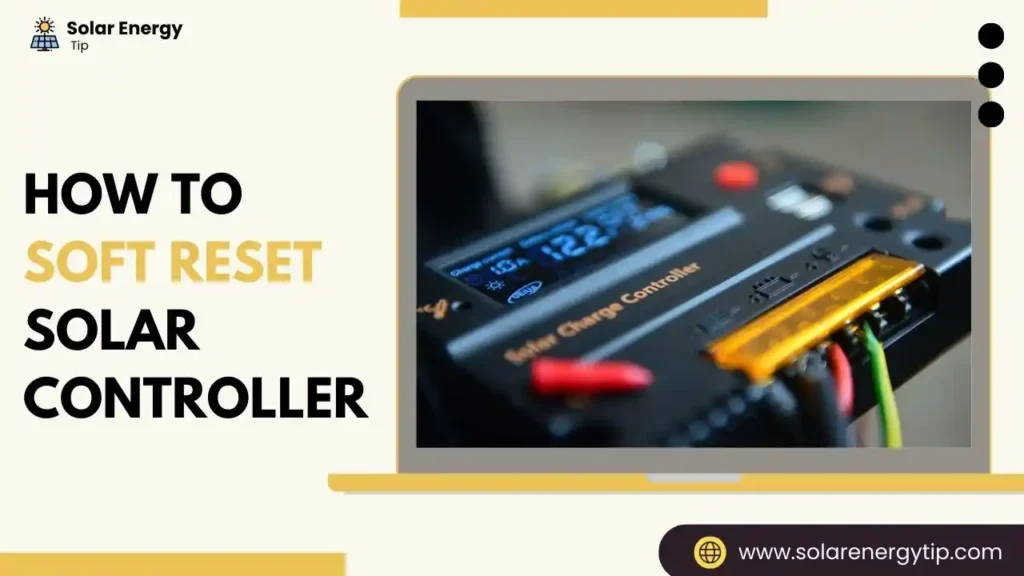
For a soft reset, you will need two components.
- Phillips screwdriver
- Paperclip
Step 1: First, use a screwdriver to open the charge controller case where the “Reset” button is located. Sometimes, it shows the front or back.
Step 2: After that press and hold for 5-10 seconds this reset button using paperclip.
Step 3: Now, you can watch the controller display value as it restarts, then confirm it enters normal operating mode.
Step 4: Then slowly move through all menu options using the buttons on it, and check the current configuration value correctly.
Step 5: If, after that, the solar charge controller does not restart properly and appears unresponsive, then you go to the hard reset process.
How to Hard Reset Solar Charge Controller?
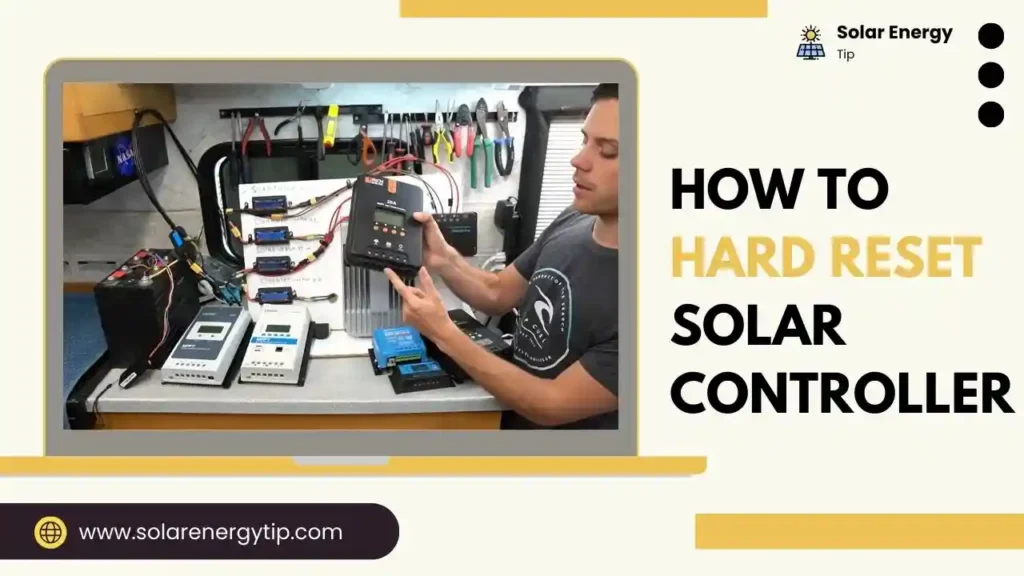
The hard process required two main supplies.
- Phillips screwdriver
- Paper clip or thin wire
- Multimeter
Step 1: In the hard process, first, you stop the power connection by turning off the circuit breakers in the solar system.
Step 2: Disconnect the solar panel and battery wires from the charge controller terminals to stop all power.
Step 3: Now, use the screwdriver to open the case to access the interior parts and components.
Step 4: There, you locate the reset or restart pinhole or small raised button; generally, it is signed by “RST” on the controller.
Step 5: Then, you can use the paperclip to depress the button for 5-10 seconds. This terminates all the controller operations.
Step 6: After that, you remove the paperclip after holding the button down for a sufficient time. This is a completely hard process.
Step 7: Now, Bck to start the connection, do it securely; reconnect the solar panel and battery to the charge controller terminals.
Step 8: Srew the case cover back together and on the circuit brackets to start the system again.
Step 9: Now, check the controller power on or toggle on/off switch to turn it back on.
Step 10: You must use a multimeter to check the voltmeter reading generating your charge controller.
Now you can reset your solar charge controller and put it to good use
Should You Do a Hard or Soft Reset? (Soft Rеsеt vs. Hard Rеsеt)
You can select a hard or soft process for resetting the solar charge controller as per requirement.
From my concept, the soft process was adopted first. If that doesn’t fix the problem, then go for a hard process.
Below, I am going to tell you briefly about what is between hard and soft processes.
| Soft Reset Process | Hard Reset Process |
|---|---|
| There is no need to cut off complete power during | It is necessary to cut power completely during reset. |
| Use this when the controller responds but runs in errors. | It is necessary if the controller is totally unresponsive or frozen condition. |
| This may retain custom program after reset | Typically, it reset all settings to the factory default |
| Low risk of damage or data loss | Risk of damage or data/parameter loss |
How to check if the solar Charge controller is working?
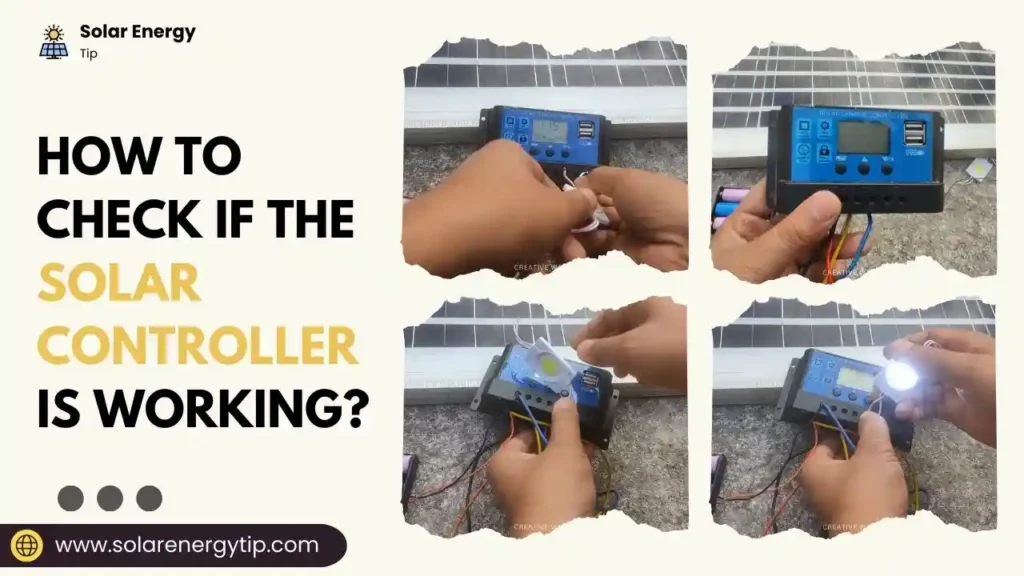
After all the reset processes, you can take some steps to check the working of the solar charge controller.
Check Controller display for indicators – It has no error codes, status lights issue, or blank screen. If there is a normal display, show good connectivity and charging data.
Check the solar panel terminal’s voltage – using a multimeter to verify panels are outputting expected voltages. If there is no output, then consider a solar wiring issue.
Check Voltage at battery bank terminals – You confirm the charge controller is charging the battery properly.
Inspect charging amperage – Use the multimeter to see solar input should show charge current flow levels are near expected panels and controller rating.
What should I do if my solar controller isn’t working?
If your solar charge controller is not working even after resetting it, there may be internal problems that require further troubleshooting.
If you don’t know the reasons for the solar charge controller not working, then Below, I have provided some additional steps that you can take.
- Check the connection between solar panels, charge controller, inverter, and batteries to ensure that they are properly wired and secure.
- Inspect all components for any damage.
- Consult the user manual or contact the manufacturer for this troubleshooting.
- Even after doing all this, if you are facing a problem, then I suggest you change your solar charge controller.
Here, I am showing you an excellent type of solar charge controller that you can use to solve your problems.
FAQs
What is the difference between an MPPT and a PWM controller?
The differences between MPPT and PWM charge controller are their efficiency and energy-optimizing capacity.
An MPPT is more efficient and converts more solar input voltages to optimal charging voltages than a PWM.
PWM has a simple and loses some energy as heat to regulate its voltages.
Can I leave solar panels connected while I reset my controller?
No, when you want to reset the MPPT charge controller or do a hard reset, you disconnect the solar panels and cut the power.
Yes, when you want to reset the PWM charge controller and do a soft reset, you leave disconnecting.
What is the voltage setting for the solar charge controller?
This voltage value setting depends on the battery bank. If the battery is 12V, then the value is set between 14.1V to 14.5V.
Where is the hard reset button?
I can’t tell you the perfect location of the reset button because the energy model has its unique location. Typically, a pinhole-size button is on the front side of the controller.
Please provide your controller model in the comment, then I will give you an accurate answer.
My controller gets very hot in the sun, is that expected?
Yes, It is normal in direct sunlight because it regulates power, which generates heat.☀️
Ensure ventilation for the smarter stay under the range. However, if it’s getting very hot and uncomfortable when touched, it could be an issue.
Conclusion
At last, I will tell you resetting the solar charge controller can resolve the most common issues and restore its functionality.
By following the above steps in full tutorials, you can do both soft and hard resets for your solar charge controller when necessary.
If, even after this, there is some problem in your solar charge controller, if you are not able to solve it
Then please comment to me, and I can give you a good answer as soon as I get time.

